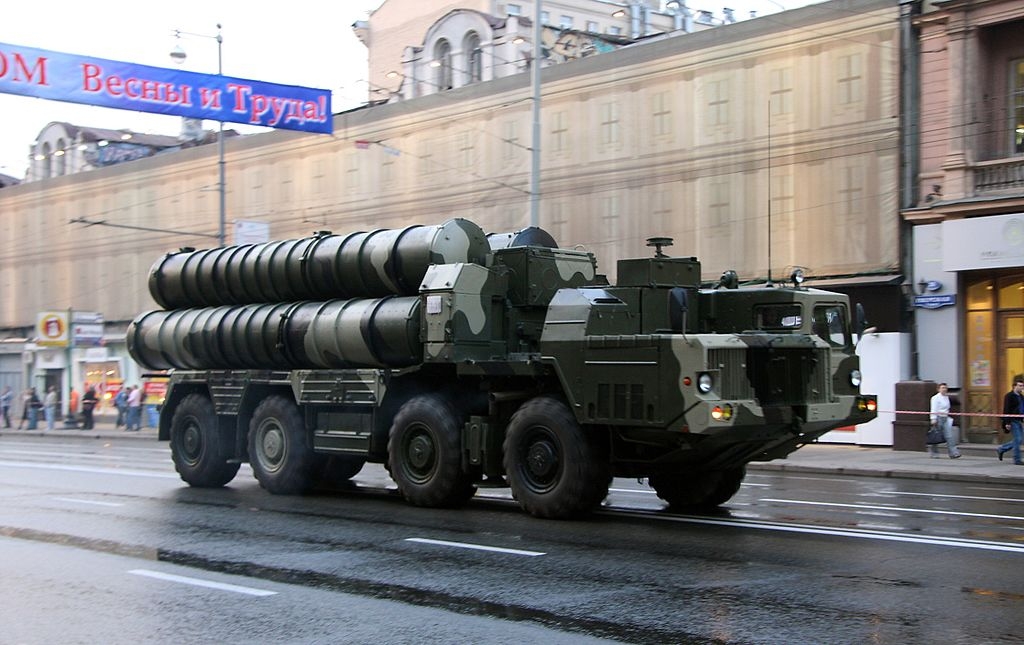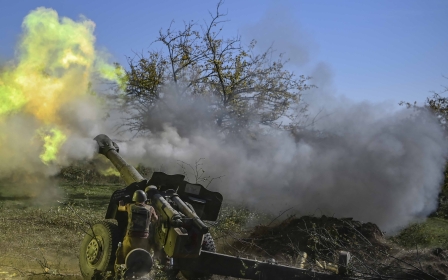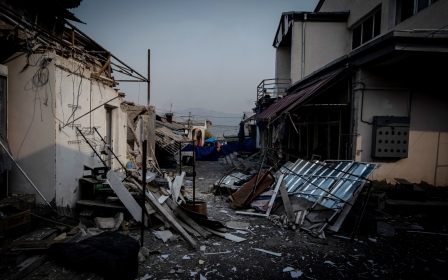Azerbaijan-Armenia conflict: How Baku destroyed Russian S-300s with Israeli suicide drones

Azerbaijani forces used a sophisticated method to destroy Russian-made S-300 air defence systems during the Nagorno-Karabakh war last year, combining Soviet-era single-engine planes with Israeli-made "suicide" drones, Middle East Eye can reveal.
Azerbaijan’s battle strategy was based on the use of advanced drone technology in the disputed mountainous territory, tactics that won Baku the 44-day war against Armenian forces. Yerevan suffered huge losses of Russian weaponry, including six S-300 systems, according to the Azerbaijan military.
A senior official, who was briefed on Azerbaijan’s drone warfare, told MEE that at first Baku found it difficult to detect the S-300s, which were concealed and difficult to spot.
'Azerbaijan even didn’t need to change the actual shape of the Antonovs, they just need to appear as military drones on the radar'
- Can Kasapoglu, analyst
The solution, according to the official, was simple: Azerbaijan needed a decoy aircraft to lure and identify the Russian-made systems. Baku then began to employ Soviet-era Antonov An-2 single-engine utility and agricultural aircraft, which cost no more than $100,000 and were readily available.
Azerbaijani engineers converted the aeroplanes into unmanned aerial vehicles by replacing the pilot with a kit that allows remote control.
New MEE newsletter: Jerusalem Dispatch
Sign up to get the latest insights and analysis on Israel-Palestine, alongside Turkey Unpacked and other MEE newsletters
“The Antonovs would appear on radar as legitimate military-grade drones and activate the S-300 systems,” the official said. “And then Israeli-built Harop loitering munitions, dubbed 'kamikaze drones', would hit the Russian-made systems.”
A satellite image published by Russian media last October indicated that Azerbaijan had moved 50 An-2 biplane aircraft to Yevlakh airport, near the Azerbaijani city of Ganja.
Shushan Stepanyan, the spokesperson for the Armenian military, reportedly said on 1 October that they shot down an An-2 that didn’t eject any pilot, raising suspicions that it was being used as an unmanned aerial device, collecting information on Armenia's air defences.
(Footage released by the Armenian Defence Ministry shows the moment when an Azerbaijani An-2 was hit by their air defences on 1 October 2020)
Can Kasapoglu, director of defence research at Turkish think-tank EDAM, told MEE that the method was a textbook approach to the Russian weaponry.
“The Russian military, like the Armenians, wouldn’t activate their systems unless they see a threat on the radar,” he said. “Azerbaijan even didn’t need to change the actual shape of the Antonovs, they just need to appear as military drones on the radar.”
During the September-November conflict in Nagorno-Karabakh, a nominal Azerbaijani territory that had been occupied by Armenian forces since 1994, Turkey and Israel provided unprecedented support for Baku.
Armenia and Azerbaijan agreed on a ceasefire after six weeks of heavy fighting in November, following the Azerbaijani army’s seizure of the strategic city of Shusha (known as Shushi in Armenian).
The agreement, which was met with anger and disbelief among Armenians, handed administrative control over several areas of the mountainous territory to Azerbaijan.
Middle East Eye delivers independent and unrivalled coverage and analysis of the Middle East, North Africa and beyond. To learn more about republishing this content and the associated fees, please fill out this form. More about MEE can be found here.




